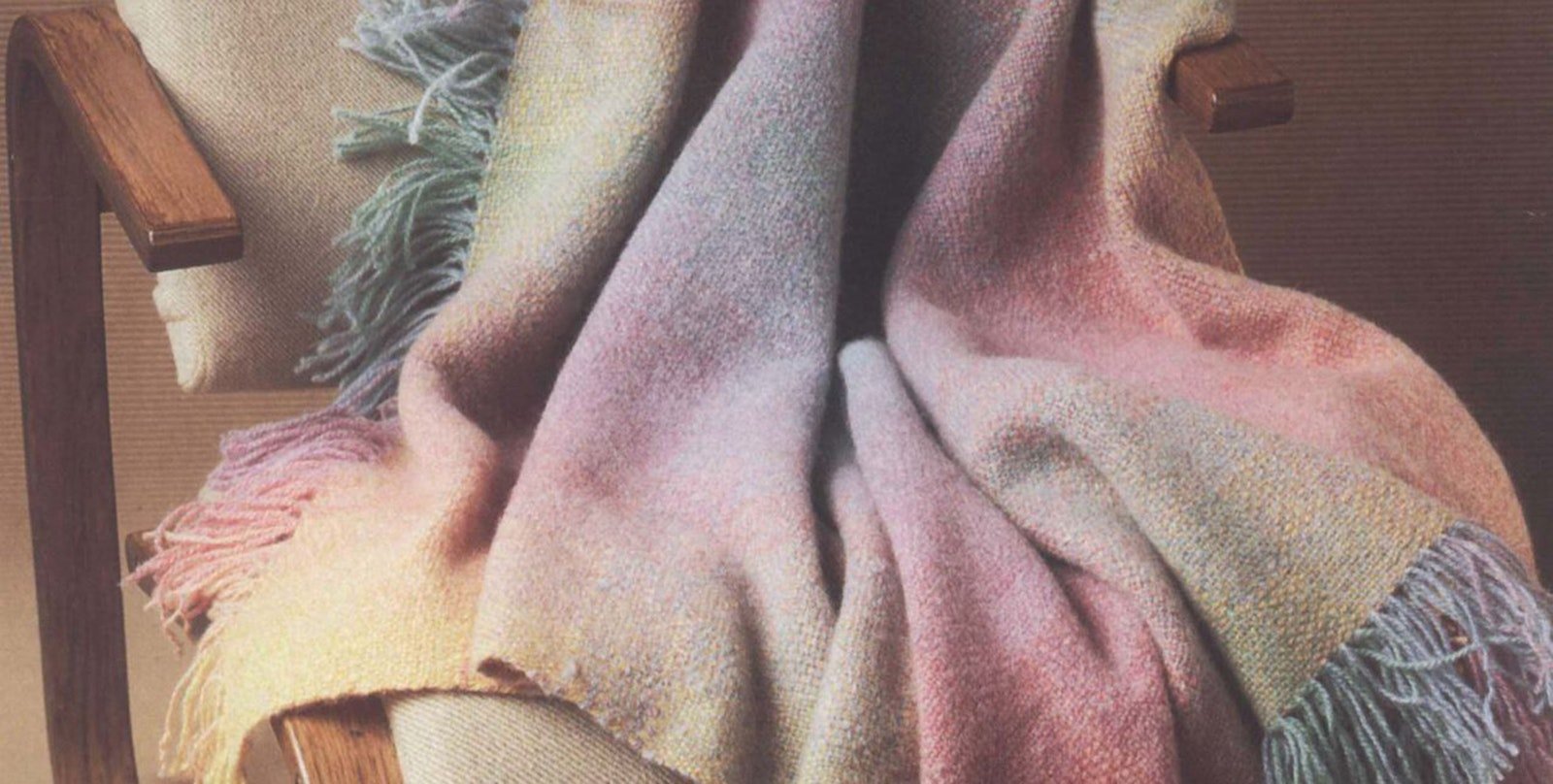 | |
| Rainbow blanket by Faye Kolhonen | |
 | |
| Caribbean Blues Blanket by Leslie Voiers |
In my first weaving class, we wove four-inch-wide samplers. This gave me the distinct impression that new weavers should weave little things, narrow things. The warp for our samplers was inexpensive crochet cotton and the weft was dime-store rug yarn. These yarn choices suggested to me that new weavers should not use (i.e., waste) expensive materials. We should practice with lesser yarns first. I did notice, though, that it didn’t take very long to weave one yard of that sampler. The thought struck me that except for warping time, weaving something wide didn’t take any longer than weaving something narrow, unless you counted the time it took for the shuttle to travel a little farther.
Thinking along these lines helped me decide to weave a coverlet as my first project. If I had known then what I know now, I would have picked a blanket or throw as my “first.” My coverlet had a fine (boring) off-white cotton warp (36 ends per inch) and two wefts (pattern and tabby, at 72 picks per inch). Although it might not have taken much longer to weave it than something much narrower, I sure could have picked an item that was faster to weave and that didn’t require quite as much experience (at drafting, warping, using fine threads, achieving an even beat, and maybe most important of all—at unweaving).
Most blankets and throws use relatively thick yarns (lovely, soft, colorful yarns that are fun to handle). That means that a blanket might not have any more warp threads in it than a fine cotton table runner. Therefore winding a warp for a blanket or throw (or even weaving it) may be no more time-consuming.
Usually, the important element of a blanket or throw IS the yarn. So threadings and weave structures tend to be simple and straightforward. Instead of spending so much time with my fine off-white cotton (winding the warp, threading, and beaming), I could have been winding a rainbow of wool colors. Instead of the complicated overshot draft I used (thereby making many errors), I could have been threading twill or plain weave or some simple lace at eight ends per inch.
I wish I’d had this eBook back then. It is full of colorful projects, all on four shafts (in twill, shadow weave, plain weave, Atwater-Bronson lace, huck lace, and more). Light cotton blankets for summer picnics and warm cozy blankets for cool evenings—these blankets will please beginning and experienced weavers alike.
When you weave a blanket, its colors fill your vision. When you take it off the loom, you have something big and wonderful to show for your time. During warm weather, a blanket can brighten the arm of a couch or the end of a bed. When winter comes, you can wrap it around you. A blanket can give more beauty and tactile pleasure than almost any other handwoven item, both as you weave it and as you use it.

 |  | |
| Shadow-weave blanket by Sharon Alderman | Cotton blanket by Carla Buchheit |

